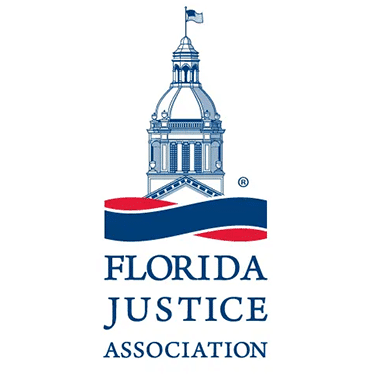
If you’re searching for rape on college campus statistics, you’re likely seeking to understand the scope of this urgent issue. Current findings are stark: nearly a quarter of undergraduate women and more than 5% of undergraduate men have endured sexual assault during their college years. Our coverage here aims to cut through the complexities and provide you with a straightforward exploration of this somber reality, its underlying factors, and the ongoing efforts to tackle it.
Key Takeaways
- Campus sexual assault is a pervasive issue affecting a substantial proportion of the student population, with particularly high rates among undergraduate females, nonbinary, and gender-questioning students.
- Factors like alcohol and drug use, fraternity culture, and societal norms contribute to campus sexual assault, making it crucial to address these underlying causes through comprehensive prevention strategies.
- Reporting rates of campus sexual assault are low due to barriers such as fear, stigma, and inadequate institutional responses, highlighting the need for improved support systems and resources for survivors.
Contact us today for your free & confidential case review. Our team will help you get the compensation that you deserve.
The Prevalence of Campus Sexual Assault
Campus sexual assault significantly blights our higher education institutions and affects students of all genders, including female college students. College women, nonbinary, and gender-questioning individuals notably bear the brunt of this violence. The magnitude of the issue is staggering – a harrowing reality that is often obscured by the serene façade of college life, making it crucial to acknowledge that college sexual assaults occur, rendering college sexual assault a pressing concern.
According to a study, the following statistics reveal an alarming pattern of sexual victimization on campus:
- 26.4% of undergraduate females experience rape or sexual assault through physical force, violence, or incapacitation
- 6.8% of undergraduate males experience rape or sexual assault through physical force, violence, or incapacitation
- Nonbinary and gender-questioning individuals, such as transgender, genderqueer, nonconforming, and questioning students, are at a heightened risk of experiencing sexual violence on campus
These statistics highlight the need for continued efforts to curb sexual violence on college campuses.
The persisting high rates of campus sexual assault highlight the pressing nature of the issue. This serves as a grim reminder of a hidden reality lurking behind the impressive architecture and academic achievements – a reality fraught with sexual harassment, unwanted sexual advances, and frequent assaults. It’s a reality that demands our attention, our understanding, and most importantly, our action.
National Statistics
National statistics further illuminate the grave nature of campus sexual violence. Far from being isolated incidents, sexual assaults on college campuses are a nationwide issue that affects a significant proportion of our student population.
Some statistics on sexual assault on college campuses:
- One in 5 women and 1 in 16 men experience sexual assault during their time on college campuses.
- Women aged 18-24 are three times more likely to be victims than any other age group.
- Men enrolled in college are 78% more likely to be sexually assaulted compared to other men of the same age not enrolled in college.
- The prevalence rate of unwanted sexual contact among TGQN (transgender, genderqueer, nonconforming) college students stands at a disturbing 23.1%.
These statistics are not just numbers; they represent the lived experiences of countless students across the country. They paint a distressing picture of the scale of campus sexual violence, reminding us that behind every statistic, there is a story of trauma, resilience, and the struggle for justice.
College-specific Data
While national statistics offer a broad perspective, college-specific data elucidates how sexual assault rates diverge among different institutions. The rates can swing from as low as 14% to as high as 32%, reflecting the variations in campus culture, preventive measures, and reporting mechanisms across colleges.
However, one commonality across all colleges is the issue of underreporting. Research indicates that approximately 90% of sexual assaults on campuses go unreported, significantly affecting the reliability of the data and the support available for sexual assault victims. With many cases going unreported, the campus crime statistics often do not reflect the true extent of the problem.
Self-reported data on sexual assault, while not entirely reliable, can provide valuable insights into the extent and nature of rape and domestic violence experienced by a population. However, the prevalence of underreporting underscores the urgent need for mechanisms that encourage survivors to come forward and report their experiences.
Factors Contributing to Campus Sexual Assault
Grasping the prevalence of campus sexual assault forms only a segment of the bigger picture. To effectively address this issue, we need to delve deeper and explore the factors that contribute to its occurrence. These factors are multifaceted and complex, encompassing individual behaviors, societal norms, and institutional cultures.
The use of alcohol and drugs is a major factor, frequently contributing to campus sexual assaults. The party culture on many campuses, coupled with the lack of supervision and accountability, creates an environment conducive to substance abuse and, consequently, sexual violence.
Fraternity culture is another notable factor, as it cultivates an environment ripe with hypermasculinity and aggression, thereby instigating sexual violence.
Prevailing societal norms and attitudes also contribute significantly to the continuation of campus sexual assault. The normalization of sexual assault, victim-blaming, and the stigmatization of victims all contribute to creating a culture that tolerates and even condones sexual violence.
These factors collectively contribute to the high rates of sexual assault on college campuses, emphasizing the need for comprehensive solutions that address these root causes.
Alcohol and Drug Use
The role of alcohol and drug use in campus sexual assault cannot be overstated. Intoxication can impair judgment, decision-making, and the ability to give or receive consent, making individuals more vulnerable to sexual assault. Perpetrators often take advantage of this impaired state, where victims are unable to resist or defend themselves.
Research indicates that:
- Around 50 percent of college women have experienced sexual assault, with 27 percent reporting rape or attempted rape.
- This victimization is significantly associated with alcohol consumption, abuse, and dependence.
- Among survivors, 29.7% of female and 32.4% of male victims reported involuntary substance use, primarily involving drugs.
The consumption of alcohol and drugs can greatly hinder a survivor’s capacity to recollect and report the specifics of the assault with precision. Furthermore, the presence of alcohol and drugs during the assault could influence the response and assistance that survivors receive. These findings underscore the importance of addressing alcohol and drug use in efforts to prevent campus sexual assault.
Fraternity Culture
Fraternity culture is a significant contributor to campus sexual violence. These organizations often foster an environment of hypermasculinity and aggression, creating an atmosphere that endangers female students and contributes to high rates of sexual violence. Research has shown that men in fraternities are three times more likely to commit rape than men who are not in fraternities. Greek-affiliated students also experience a higher rate of sexual assault and sexual harassment compared to students not enrolled in Greek life. Notable cases include the gang rape at a fraternity at the University of Virginia and allegations at USC fraternities.
These findings highlight the need for a comprehensive overhaul of fraternity culture. Changing the attitudes and behaviors that perpetuate sexual violence is a crucial step towards creating a safer environment for all students on campus.
Social Norms and Attitudes

- The normalization of sexual assault
- The stigmatization of victims
- Discouraging reporting
- Perpetuating harmful myths about sexual violence
Prevailing social norms that contribute to the normalization of sexual assault include:
- Male entitlement
- Gender inequality
- Women’s sexual purity
- Protecting family honor over women’s safety
- Men’s authority
These norms are often perpetuated through societal institutions, including universities, contributing to a culture that tolerates and even condones sexual violence.
Victim-blaming is another harmful norm that deters victims from reporting sexual assault. By shifting the blame from the perpetrator to the victim, society effectively silences survivors and enables perpetrators to continue their criminal behavior.
To effectively address campus sexual assault, we need to challenge these harmful norms and foster a culture of respect and accountability.
Reporting Rates and Barriers
Despite the pervasiveness of sexual assault on college campuses, a large number of incidents remain unreported. The reporting rates of campus sexual assault are alarmingly low, reflecting the various barriers that inhibit victims from coming forward.
Victims are often deterred from reporting due to fear and stigma. Survivors often fear being judged, retaliated against, or not believed. The stigma associated with sexual assault can also lead to feelings of shame and self-blame, further deterring victims from reporting.
The absence or inadequacy of institutional responses also acts as a significant obstacle to reporting. Universities may choose not to report incidents to safeguard their reputation, leading to a lack of support for survivors and a lack of accountability for perpetrators. These barriers underscore the need for comprehensive strategies to encourage reporting and support survivors, including:
- Implementing clear reporting procedures and protocols
- Providing confidential reporting options
- Offering support services for survivors
- Conducting thorough investigations
- Holding perpetrators accountable
These strategies are crucial in creating a safe and supportive environment for survivors and ensuring that incidents are properly addressed.
Fear and Stigma
Fear and stigma are powerful barriers that deter many survivors from reporting sexual assault. Fear of judgment, disbelief, or retaliation can discourage survivors from coming forward and seeking justice.
Stigma, influenced by societal attitudes and rape myths, can lead to feelings of shame and self-blame among survivors. This can deter survivors from reporting their experiences, as they may feel responsible for what happened or fear being judged or blamed. These feelings of shame and self-blame are often exacerbated by societal norms that blame victims and excuse perpetrators.
The fear and stigma associated with reporting sexual assault highlight the need for a supportive and non-judgmental response to survivors. By creating a safe and supportive environment for survivors, universities can help overcome these barriers and encourage survivors to come forward.
Institutional Responses

Institutions are legally required to establish procedures for handling sex discrimination complaints, including sexual assault cases, under Title IX. However, some universities may choose not to report incidents to protect their reputation, leading to a lack of support for survivors and a lack of accountability for perpetrators.
The inadequacy of institutional responses underscores the need for universities to take a proactive role in addressing campus sexual assault. This includes:
- Developing comprehensive policies and procedures for handling reports of sexual assault
- Providing support for survivors
- Holding perpetrators accountable.
Support and Resources for Survivors
To address the issue of campus sexual assault, providing support and resources for survivors is essential. These resources can provide survivors with the help they need to heal, cope, and seek justice.
On-campus resources, such as counseling services, medical care, and legal assistance, can provide vital support for survivors. These services can help survivors navigate the aftermath of an assault and provide them with the tools they need to begin their healing journey.
External organizations also play a crucial role in providing support and resources for survivors. Organizations such as RAINN, Safe Horizon, and Know Your IX offer a wide range of services, including hotlines, legal information, and advocacy efforts, to help survivors navigate their healing journey and seek justice.
Campus Services
Campus services for survivors of sexual assault play a crucial role in providing support and resources. These services can vary from institution to institution but generally include counseling, medical care, and legal assistance.
Counseling services can provide survivors with:
- A safe space to process their experiences and receive emotional support
- The tools they need to cope with the aftermath of an assault
- Support to begin their healing journey
Medical care is also a vital service for survivors. Following an assault, survivors may need medical attention, including sexual assault forensic exams, STI testing, and emergency contraception. Legal assistance can also be crucial for survivors, helping them navigate the legal system and seek justice.
External Organizations
In addition to on-campus resources, external organizations also provide a wealth of support and resources for survivors of campus sexual assault. Some of these organizations include:
- RAINN (Rape, Abuse & Incest National Network)
- National Sexual Violence Resource Center
- It’s On Us
- End Rape on Campus
These organizations work tirelessly to provide survivors with the help they need to heal and seek justice.
RAINN, the nation’s largest anti-sexual violence organization, operates the National Sexual Assault Hotline and provides survivors with a range of resources and support. Safe Horizon provides prevention programming, bystander intervention training, and workshops to address sexual violence on campus.
Know Your IX offers resources, information, and support to aid survivors in navigating reporting processes and securing measures to preserve their access to education. These organizations, along with many others, play a vital role in supporting survivors and advocating for an end to campus sexual assault.
Contact us today for your free & confidential case review. Our team will help you get the compensation that you deserve.
Prevention and Education Efforts
Preventive measures and educational initiatives are essential in tackling campus sexual assault. These efforts aim to educate students about sexual assault and equip them with the skills they need to prevent it. For instance, bystander intervention training instructs individuals to recognize and effectively intervene in situations of sexual assault or relationship abuse. Consent education, which imparts essential consent skills to students and emphasizes clear and continuous communication during sexual encounters, plays a pivotal role in preventing campus sexual assaults.
Encouraging healthy relationships is also a vital component of preventive measures. By fostering respectful and non-violent relationship dynamics, these programs can help create a safer campus environment and reduce the risk of sexual assault.
Bystander Intervention Training
Bystander intervention training is a powerful tool in the fight against campus sexual assault. This training aims to empower individuals to intervene in potentially harmful situations and disrupt the cycle of violence.
Bystander intervention training is designed to educate individuals on how to identify potentially harmful situations and effectively intervene to provide support and protection to the victim. This approach aims to cultivate a culture of active intervention and support among bystanders, with the ultimate goal of decreasing the occurrence of sexual assaults.
Colleges introduce students to bystander intervention training through specialized programs aimed at raising awareness of risky behaviors and precursors to sexual victimization. These programs often involve practical scenarios and target all students, not just those at risk of becoming victims or perpetrators.
Consent Education
Consent education is a vital component of sexual assault prevention efforts. By teaching students about the importance of consent in sexual encounters, these programs can help prevent sexual assault and foster a culture of respect and communication.
A comprehensive consent education program encompasses addressing cognitive, affective, and behavioral domains; incorporating interactivity and participation; deconstructing the concept of consent; acknowledging and discussing existing student knowledge; emphasizing the importance of tone of voice; and maintaining ongoing dialogue. Examples of successful programs include in-person workshops such as the one mandated by the University of Southern California and online training programs like RealConsent.
These programs have evolved over the years to address the complex issue of sexual assault more effectively. Schools are now introducing training programs to educate students on the crucial concept of consent for sexual activity and to address allegations of sexual assault.
Promoting Healthy Relationships
Promoting healthy relationships is an essential aspect of preventing campus sexual assault. Healthy relationship programs teach students about respect, communication, and boundaries, helping to foster a culture of respect and non-violence.
Healthy relationship programs can lead to increased accurate perceptions of positive social norms, decreased endorsement of sexual assault myths, and a reduction in violent crime by 17%. They also play a crucial role in addressing intimate partner violence by promoting healthy, respectful, and nonviolent relationships.
Effective communication is of paramount importance in healthy relationship programs. It enables individuals to:
- de-escalate situations
- maintain composure under stress
- utilize humor
- offer sincere apologies
- ensure that partners feel appreciated and understood
These skills are critical in preventing and resolving conflicts and promoting healthy relationships.
Frequently Asked Questions
Is the 1 in 6 statistic true?
Yes, the 1 in 6 statistic is true, as it is supported by solid scientific research, including a study conducted by the U.S. Centers for Disease Control1.
What is the most prevalent form of violence on college campus?
The most prevalent form of violence on college campuses is rape and sexual assault, affecting a higher percentage of students compared to non-students in the same age group. Nearly 22% of undergraduate women experience dating violence.
What is the red zone in college?
The red zone in college refers to the period between move-in and Thanksgiving break when students are statistically most susceptible to sexual assault, with more than 50 percent of college sexual assaults occurring during this time. Keep this in mind and take precautions to stay safe.
What is the IPV rate in college?
The IPV rate in college is high, with approximately 1 in 3 women, 1 in 10 men, and 1 in 2 transgender individuals being victims of dating violence. This highlights the pervasive problem of IPV on college campuses today.
How many women are sexually assaulted on college campus?
Approximately one in five women and one in 16 men are sexually assaulted while attending college, according to the National Sexual Violence Resource Center. This statistic highlights the prevalence and urgency of addressing sexual assault on college campuses.
Last updated Thursday, February 1st, 2024









